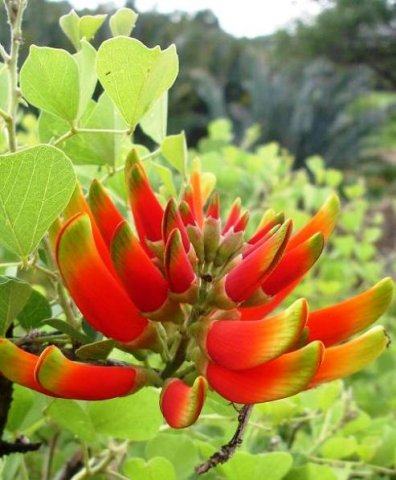Erythrina acanthocarpa

Author: Ivan Lätti
Photographer: Judd Kirkel Welwitch
Erythrina acanthocarpa is a thorny shrub known as a suffrutex, a plant that grows new shoots annually from a perennial, (mostly) underground stem or branched stems protected safely underground, annually sacrificing the above-ground parts to fire and other depredations. In such a case the rootstock performs more functions than ordinary tree roots. This is the only Erythrina suffrutex that retains perennial aerial stems of between 1 m and 2 m tall.
The common name of this plant, the tambuki thorn comes from the Queenstown area of the Eastern Cape that used to be called Tambukiland. This is where E. acanthocarpa is endemic, i.e. it only occurs in nature in this area.
The habitat is rocky outcrops in scrubland and grassland. The habitat population is deemed of least concern early in the twenty first century.
As human population numbers increase, endemic areas of many species (plants, animals, whatever lives) come under threat of no longer suitable for sustaining what used to thrive there. Any one species that overcomes its natural enemies too well and breeds beyond the level of sustaining its ecological partners, i.e. the other things that used to live there, becomes a weed, an undesirable, a threat. Weeds tend to dominate until they have used up natural resources, then disappear themselves. Tambuki thorn is neither weed, nor threatened, a well-grounded resident and citizen that knows and maintains its place in the world.
The rootstocks of dead tambuki thorn plants were used to make pith helmets long ago. Fortunately for tambuki thorn pith helmets have gone out of fashion (Coates Palgrave, 2002; Gledhill, 1981; iNaturalist; https://pza.sanbi.org; http://redlist.sanbi.org).

